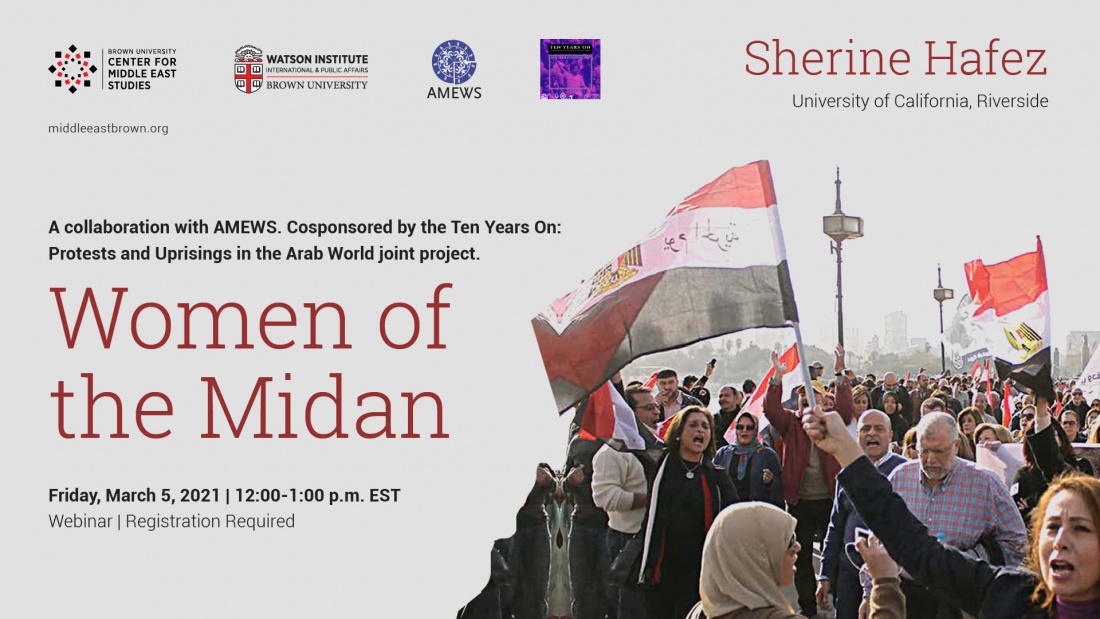Sherine Hafez Book Talk - Women of the Midan - Extended Description

The ongoing struggles between contentious forces seeking to rewrite the future of millions of Arabs in the Middle East today are the subject of much debate and introspection. While revolutionary Arabs took part in protests that toppled governments and ended tyrannical regimes, their efforts were transmogrified into diverging outcomes that threaten to dismantle the region as we know it. Scholars and observers of Arab societies and politics have produced a vast amount of literature about the revolutions—what are they? Why did they emerge? What did they achieve or not achieve?—and many analyzed the impact on the region’s geopolitical contours, all important contributions that must be considered. The bulk of this literature, however, addresses the events of the “Arab Spring” and its aftermath largely from a default male perspective and with emphasis on masculine-centric issues in the public sphere. Our knowledge of these important historical events has now been shaped by a plethora of documentation that normalizes male-centric views of the revolutions and takes for granted patriarchal forms of politics and social behavior with little or no input from women. Only a handful of scholarly publications have dealt with the events following the uprisings of 2011 from women’s perspectives. Considering that they were integral to the revolutions that took place in the Arab region, disproportionately representing women in the literature that will serve as a record of a major historical event for future specialists leads to a masculine-centric historiography of the Arab uprisings and the region as a whole. Limiting our sociocultural narrative to male-centric historicity ignores the experiences and responses to the political environment where both men and women live, their strategies and negotiations, and the measures they take to exercise their agency.
Bringing Arab women to the center of the historical narrative, this book draws on accounts by Egyptian women who witnessed the realities of the revolutionary period that began January 25, 2011 and continue to this day. Based on interviews collected over a five-year period with women from various backgrounds, classes and religious background, this current publication aims at redressing the imbalance of a male historical gaze that obscures women. It aims at producing an anthropological analysis of the 2011 revolution in Egypt that recenters women next to men as main actors during the events that toppled former president Mubarak, the elections that brought Muslim Brotherhood candidate Mohamed Morsi to government, and the events that surrounded the beginning of the current military regime of President el-Sisi. It does so without exceptionalizing women as a distinct “category” of analysis over men. Instead, it takes account of the struggles of the Egyptian people as they fought for a dream of “bread, freedom and social justice.” It is with this particular aim in mind that the following work is put to paper. To bring together a narrative that is inclusive of women in a male dominated scholarly epistemology.
